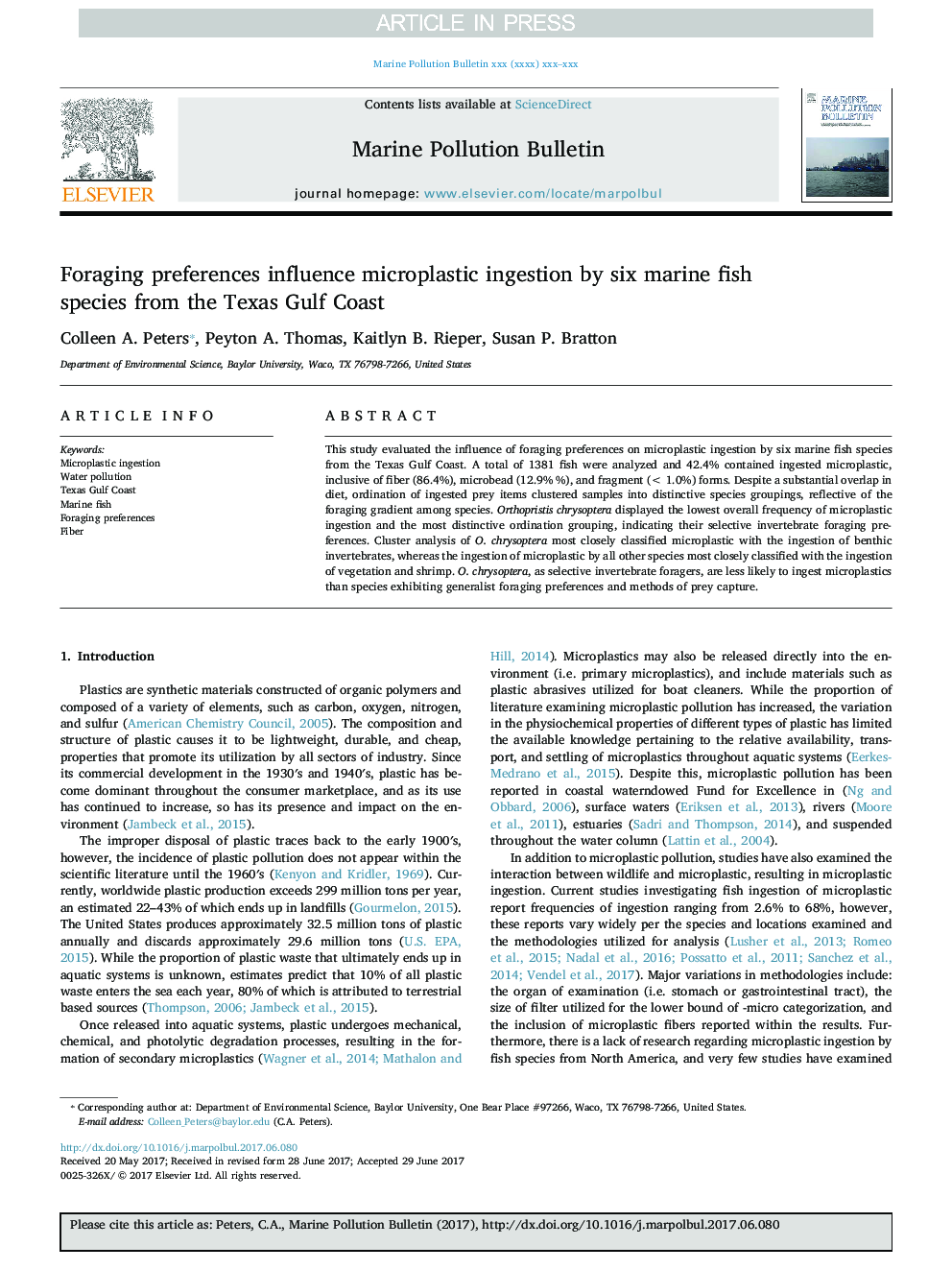| Article ID | Journal | Published Year | Pages | File Type |
|---|---|---|---|---|
| 8872114 | Marine Pollution Bulletin | 2017 | 7 Pages |
Abstract
This study evaluated the influence of foraging preferences on microplastic ingestion by six marine fish species from the Texas Gulf Coast. A total of 1381 fish were analyzed and 42.4% contained ingested microplastic, inclusive of fiber (86.4%), microbead (12.9% %), and fragment (<Â 1.0%) forms. Despite a substantial overlap in diet, ordination of ingested prey items clustered samples into distinctive species groupings, reflective of the foraging gradient among species. Orthopristis chrysoptera displayed the lowest overall frequency of microplastic ingestion and the most distinctive ordination grouping, indicating their selective invertebrate foraging preferences. Cluster analysis of O. chrysoptera most closely classified microplastic with the ingestion of benthic invertebrates, whereas the ingestion of microplastic by all other species most closely classified with the ingestion of vegetation and shrimp. O. chrysoptera, as selective invertebrate foragers, are less likely to ingest microplastics than species exhibiting generalist foraging preferences and methods of prey capture.
Related Topics
Physical Sciences and Engineering
Earth and Planetary Sciences
Oceanography
Authors
Colleen A. Peters, Peyton A. Thomas, Kaitlyn B. Rieper, Susan P. Bratton,
